Neural Networks#
A simple neural network to regress a quadratic function
Show code cell content
import numpy as np
import torch
import torch.nn as nn
import matplotlib.pyplot as plt
from tqdm import tqdm, trange
from torch.distributions.uniform import Uniform
torch.manual_seed(19)
np.random.seed(19)
In this tutorial, we are investigating how a simple neural network approximates a simple non-linear function. In this case, we will try to approximate the quadratic function \(y = f(x) = x^2\):
# ground truth function f(x) = x^2 that we want to approximate
x_plot = np.linspace(-5, 5, 100)
y_plot = x_plot * x_plot
# draw training samples
x = np.random.uniform(-5, 5, 100)
y = x * x
def plot_samples(x, y, title = "samples"):
global x_plot, y_plot
plt.plot(x_plot, y_plot, color="tab:red", label="$f(x)=x^2$")
plt.scatter(x, y, label="samples")
plt.gca().set(xlabel="x", ylabel="y")
plt.legend()
plt.title(title)
plot_samples(x, y)
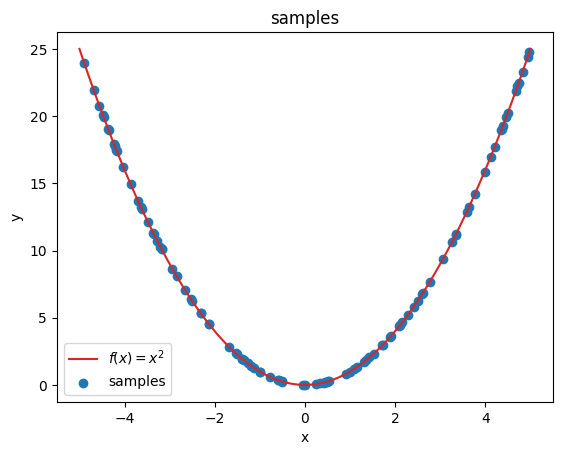
We will use PyTorch to build our neural network
from torch.optim import SGD
# number of hidden units
N_HIDDEN = 8
# define the layout of our neural network
model = nn.Sequential(
nn.Linear(1, N_HIDDEN),
# we will use ReLU as our non-linear activation function
nn.ReLU(),
nn.Linear(N_HIDDEN, 1)
)
# you can ignore this for now
# later, this hook will save as the latent representations
activations = dict()
def hook(module, x_in, x_out):
global activations
activations["latent"] = x_out.detach()
model[1].register_forward_hook(hook)
# the optimizer will update the model parameters for us
# we will use SGD: Stochastic Gradient Descent
LEARNING_RATE = 0.02
optimizer = SGD(model.parameters(), lr=LEARNING_RATE)
# number of iterations that we will train our model
EPOCHS = 5000
# our loss function: defines error between predictions and targets
# we will use Mean Squared Error, since it is a regression task
criterion = nn.MSELoss()
# for torch, we need to do some reshaping of our training data
# our network expects a single number as input
# so we need to reshape x/y from (100,) to (100,1), including a batch dimension
x_train = torch.from_numpy(x).reshape(-1, 1).float()
y_train = torch.from_numpy(y).reshape(-1, 1).float()
loss_log = []
for i in trange(EPOCHS):
# 1. forward pass: get model predictions
y_hat = model(x_train)
# 2. compute loss: error between predictions and targets
loss = criterion(y_hat, y_train)
# 3. backward pass: propagate gradient trough network
loss.backward()
loss_log.append(loss.item())
# 4. update parameters: perform one optimization step
optimizer.step()
# 5. reset torch gradients
optimizer.zero_grad()
# plot the loss curve
plt.plot(loss_log)
plt.ylabel("MSE Loss")
plt.xlabel("epoch")
Text(0.5, 0, 'epoch')
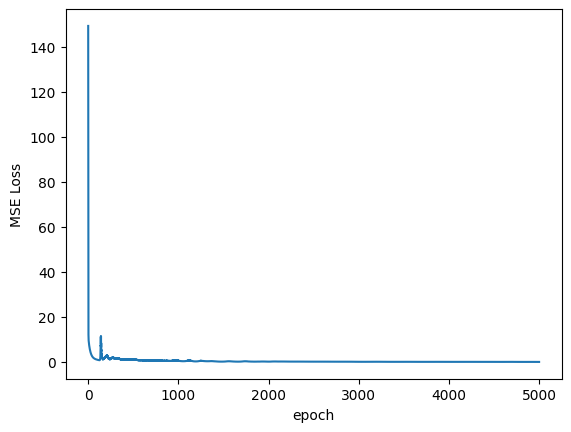
# don't need gradients to predict on whole linspace
with torch.no_grad():
x_test = torch.from_numpy(x_plot).reshape(-1, 1).float()
y_pred = model(x_test).reshape(-1).detach().numpy()
# plot predictions
plot_samples(x_plot, y_pred);
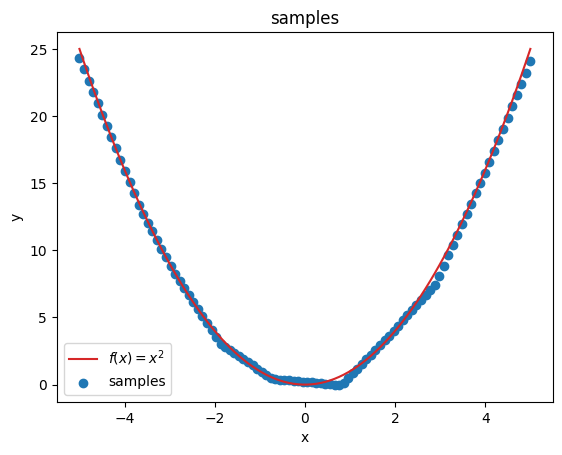
But what’s going on within the model? Let’s investigate by visualizing the latent activations. This gives us a clue, what each neuron learned:
z = activations["latent"]
for i in range(z.shape[1]):
plt.figure()
plot_samples(x_plot, z[:, i].detach().numpy(), f"hidden neuron {i}")
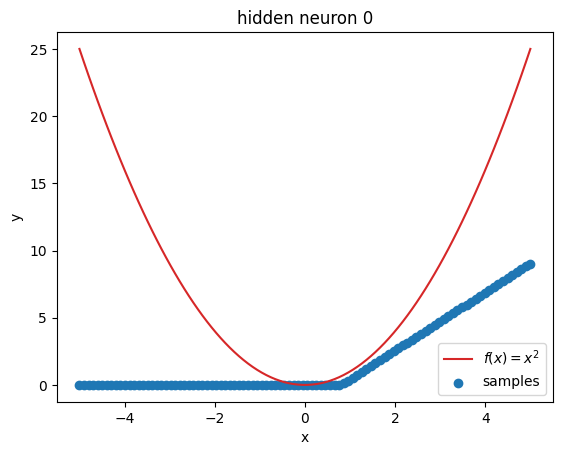
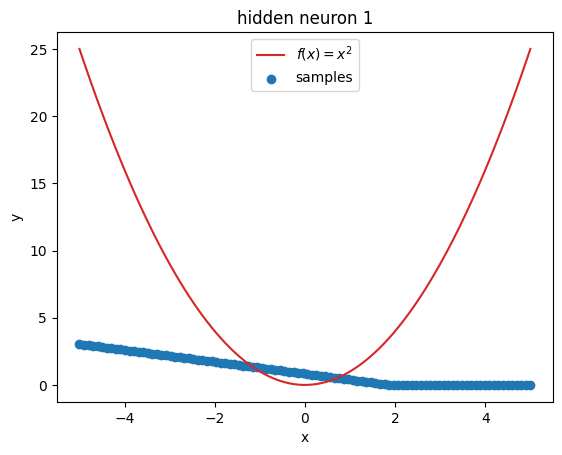
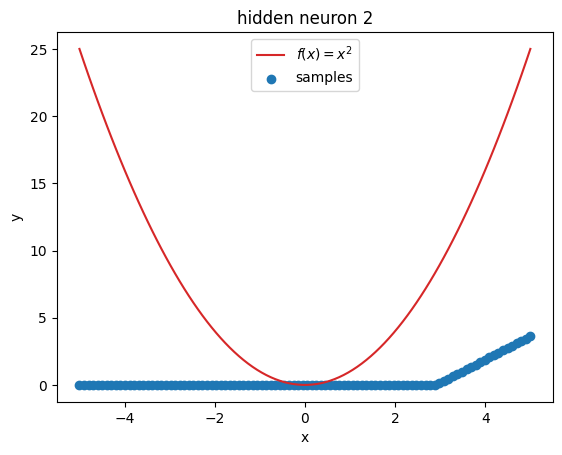
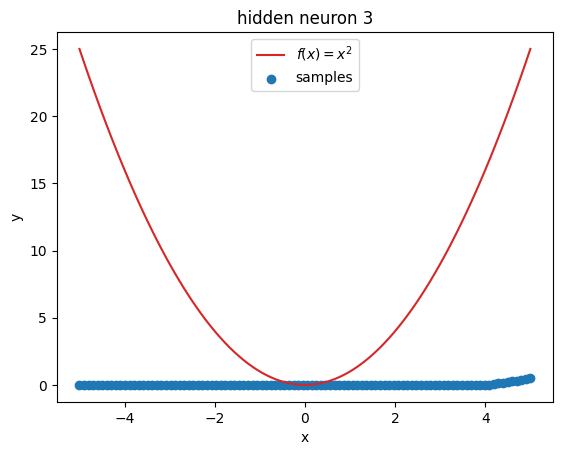
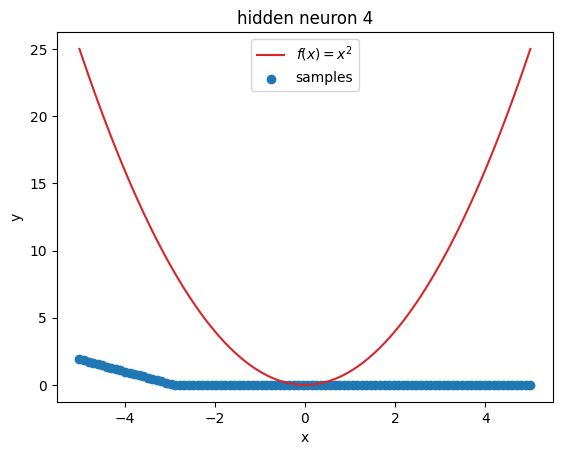
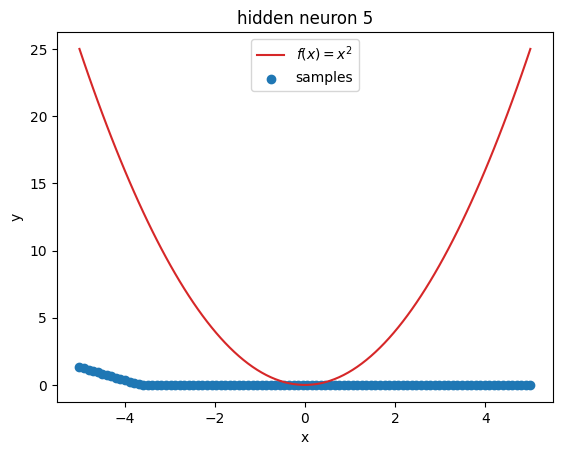
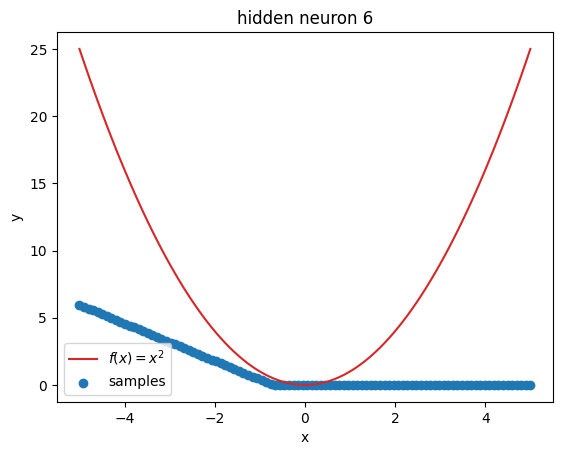
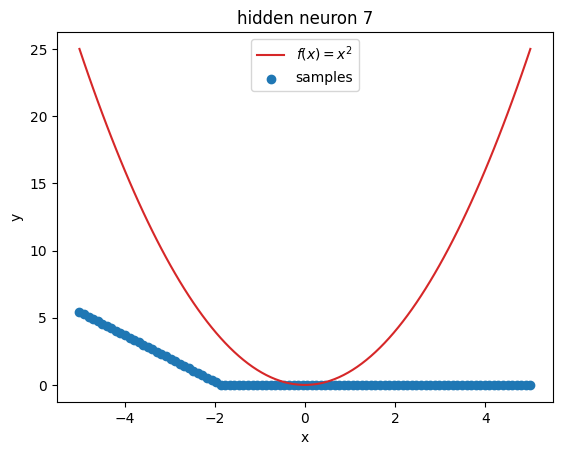
Prompts#
Try out different values for
LEARNING_RATEandEPOCHS. How does the loss change?Try different numbers of hidden units by changing
N_HIDDEN. How does the quality of the approximation change?Head to the tensorflow playground (https://playground.tensorflow.org) and play around with network configurations!


